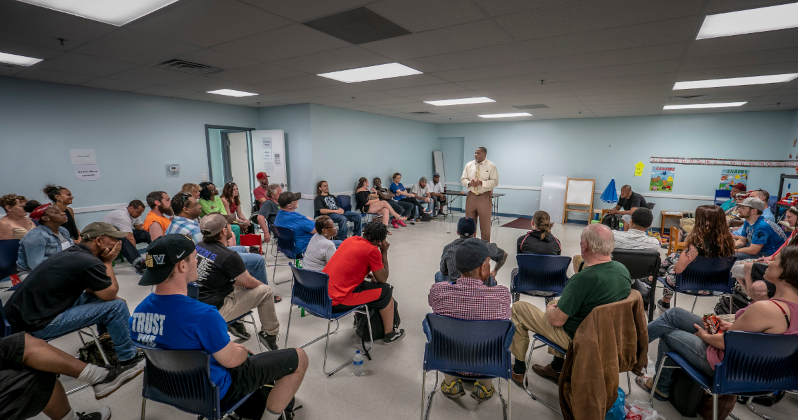“First click attribution is akin to giving my first girlfriend 100% of the credit for me marrying my wife.”
“Fundamental attribution error: our inclination to attribute people’s behavior to the way they are rather than to the situation they are in.”

One of my favorite courses in graduate school was research evaluation which involved the analysis of study designs.
It was fascinating to me to figure out how to determine the impact of independent variables on dependent variables and how to factor out how each potential cause created a specific effect.
Yeah, I know, that sounds like a lot of statistical gobbledygook.
In short, what I enjoyed was the process of finding a fair attribution of variance for the sources of gain and loss.
We have always struggled with this challenge.
Early humans tried to figure out if their dances caused the rains to fall or if weather changes were simply random.
Religions formed to give people comfort that the bad and good things that happen in life are a result of divine intervention. If you come down with a devastating disease, it must be for a reason. If a kind stranger helps you out when your car breaks down, it must be because of the prayers you said last night.

One of the most difficult attribution challenges has to do with the causes of premature morbidity and mortality.
Tons of research has been devoted to determining the percentage each factor contributes to early death or disease. Essentially, the causes can be grouped into four categories: genetics, lifestyle behaviors, health system quality and access, and the environment in which you live, learn, and work. Science has evolved over decades and the evidence now is fairly clear. The attribution of variance looks something like this:
- Lifestyle Behaviors: 50%
- Biological and Genetic Factors: 20%
- Social and Environment: 20%
- Health Services (quality and access): 10%
Matching up the causes with the costs, we find that money is being spent in exactly the reverse order. Most of our health care costs go to health services (i.e. hospitals, health care workers, and insurance). Lifestyle behaviors get the least amount of attention. If attribution preceded allocation, we would focus more on prevention than treatment.
This principle applies to parenting as well.
A child’s behavior can be the result of several factors: her physical, emotional, intellectual and spiritual environment, his DNA (i.e, how is the child hard-wired—calm, hyper, autistic, gregarious), and the choices within the child’s control to make. Simply put, you can’t ask a child to do what she or he is unable to do. And it makes no sense to punish a child because external and internal factors override the child’s agency to make a healthy choice. Again, attribution should precede allocation.
If a child grows up in a physically, emotionally, intellectually, and spiritually toxic environment, then our first intervention ought to look at changing the environment, i.e. adequate housing, diet, child care, and education.
But, once again, we allocate resources to the symptoms of all these factors instead of the systems that produce them, e.g. drugs and jails.
In my work as an organizational psychologist, I’m always trying to determine how much success or failure is due to commitment, capability, capacity or culture.
It’s hard to assess how much of each variable caused any given outcome. What I have learned over the years is that one of the most important determinations in any problem solving venture is whether the root cause is individual or cultural—i.e. are a few disruptive individuals causing a problem to occur, or is the culture the real culprit?
Getting that decision right is critical to choosing the most productive path forward.
The point is that choosing the right solution depends upon an accurate attribution of variance to each factor. If the cause of the problem is capability, then the solution might be a training program. If the cause is commitment, then the solution has to involve aligning values, mobilizing support, and changing the rewards and recognition system.
Allocation of resources to any potential solution should be based on an accurate attribution of the specific causes.
I once worked with an executive in charge of selecting CEOs for a large portfolio of companies a private equity firm owned.
We designed a selection process that started with the requirements of the particular job and then weighted several criteria to help him choose the right person for the job given specific requirements. Those criteria included experience, education, motivation, learning agility and cultural fit. The key to making the best decision was to conduct the evaluation process with impartial objectivity independent of any personal or professional bias.
The questions we need to ask ourselves are:
1) How impartial and objective are we really being in this process?
And 2) is it possible to be completely impartial and objective given our unconscious (or conscious) biases and the cultural influences in our lives?
In the COVID crisis, we are faced with the challenge of fair attribution of variance.
As I write this post, over 130,000 people have died in the US, and cases are occurring at a rate far higher than European and Asian countries who had less time to prepare and fewer resources to employ.
The question is how much of the failure we are experiencing is due to inept leadership; lack of cultural compliance; lack of testing, tracing, and treatment resources; political ideology; and China.
If I were to attribute the variance among those factors, my percentages would probably weigh more heavily on leadership incompetence and the American culture than the other causes.
A more conservative person would probably assign the variances much differently. The question is, on what evidence is each of us basing our attributions.
What I have learned painfully since my graduate school education is that fair attribution of variance is a very difficult standard to achieve. It requires experience, expertise, and evidence for starters.
And it requires a willingness to work hard on self-awareness and take a hard look at own unconscious biases. Unfortunately, we don’t like to disrupt our comfortable conceptions of ourselves.
We would much prefer to pretend that all is well in the world and that our seat-of-the-pants attributions are absolutely accurate.
White folks like me have taken note of the disproportionate use of force by police against African Americans for decades, but the George Floyd tragedy was somehow a tipping point. Hopefully, all of America will now acknowledge the 400 years of abuse perpetrated against black Americans.
Applying the theme of this post, the first challenge is to get an objective assessment of the causes of this heinous and historical violence. Is it an individual problem or a cultural one? Having worked with lots of cops on the front lines, I know that most police officers are dedicated to public safety and trying their best to do an extremely difficult job.
The frequency of tragic incidents, however, makes me believe that this problem goes beyond a few bad apples.
Making a fair attribution of variance in all of the cases before and after George Floyd is extremely difficult. How do we determine the root causes of this enduring problem: white fragility, white rage, black anger, 400 years of discrimination and exploitation?
It seems to me that the most appropriate solution for us white folks is to own our fragility and rage and to support bold solutions to address 400 years of systemic and structural abuse.
We need to get the attribution of causes and the allocation to reparations right.
The George Floyd tragedy shined a bright light on a dark history of unfair attribution of variance.
It’s not like the violence against African Americans has been a secret or that disproportionate use of force against black people hasn’t been in the news for decades.
The white community has simply been all too quick to assign too much weight to the wrong reasons for racial tensions and inequalities and way too slow to own our role in the problem.
Guilty as charged.
In the book White Fragility, Robin DiAngelo aims to teach us white folks how to identify our own racism and implores us to confront the resistance we have to name it and change it.
The compelling message I got from the book was Name it – Own it – Change it.
Highly recommended.
May we be open to evidence as it emerges through historical and scientific analysis and may we strive to be more fair, impartial and objective in all of our attributions. Also, may we rely on the expertise of people who have directly experienced unfair attribution instead of believing in our solipsistic intuitions to preserve our sense of comfort. Finally, let’s resist first click attribution. It leads to a lot of pain and poor allocation of resources.



